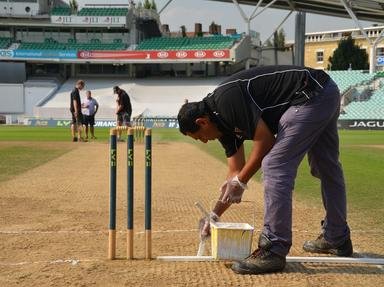Quiz Answer Key and Fun Facts
1. In the Brisbane test against England in 1970 Australia had made its way to three for 418 then, remarkably, lost their last seven wickets for 15 runs. Which English bowler triggered the Australian collapse?
2. Keith Stackpole's innings of 207 during the first Ashes test of the 1970-71 season, was a new record score against England at the Gabba ground. Who previously held the highest score against England?
3. December 11, 1970, saw the commencement of the first-ever test match at the WACA ground in Perth, Western Australia. Appropriately, who bowled the first-ever delivery in tests at the ground?
4. There were four century makers in the 1970 test match between Australia and England played at the WACA ground in Perth. For one of these centurions it was their first test match. Who was he?
5. The third test of the 1970-71 Ashes series between Australia and England was abandoned without a ball being bowled. Were the two umpires, Lou Rowan and Tom Brooks, officially credited with this game?
6. Which batsman guided England into a match-winning position during the fourth Ashes test in 1971, with an innings of 142 not out?
7. What was significant about Bill Lawry's 60 runs scored during Australia's second innings of the fourth Ashes test in Sydney, 1971?
8. Which notable Australian fast bowler took five wickets during his debut in the sixth test of the 1970-71 Ashes series?
9. What factor(s) contributed to Ray Illingworth ordering the English team to stage a walk-off during the seventh Ashes test of 1970-71?
10. Which bowler dominated the 1970-71 Ashes series between Australia and England?
Source: Author
pollucci19
This quiz was reviewed by FunTrivia editor
Nightmare before going online.
Any errors found in FunTrivia content are routinely corrected through our feedback system.

